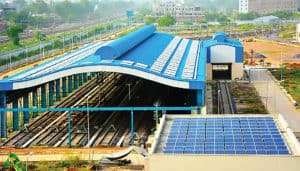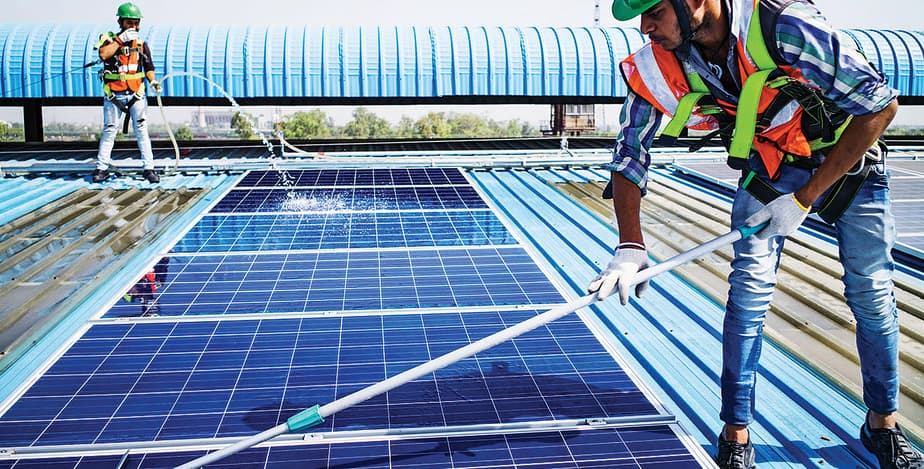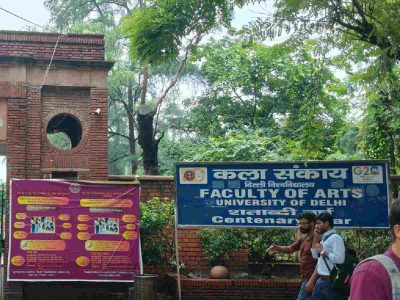The government is doing its bit to make institutions in the Capital run on solar energy. What would really be a gamechanger was if ordinary citizens took the initiative to generate solar energy
“Ever since solar panels have been installed in our school, we’ve been saving almost 30 per cent on the electricity bill,” says Ashok Kakkar, an official from Kendriya Vidyalaya in RK Puram, Delhi.
Kakkar thinks this is a good initiative by the Delhi government and may help schools to save a lot on electricity bills, besides being an eco-friendly measure.
In order to focus more on clean renewable energy and to make Delhi more solar energy friendly, the Delhi government has been installing solar panels in central and state government buildings and even in government schools.

The drive, which is being overseen by the Energy Efficiency and Renewable Energy Management Centre (EE&REM), has reached a target of 105mw (megawatts) of power. While the government aims to reach a highly ambitious target of 1,000mw by the year 2020, the work is going on at a rapid pace, according to the Union government’s power department.
Executive Officer of the department AK Jha reveals, “Till now we have covered many central and state government buildings and places like Azadpur Mandi, District Court in Saket, Department of Revenue Intelligence and 20 government school buildings.”
Jha says a lot of tenders have been given to private players in the past and a lot are being issued. Jha says although the aim to reach the target of 1000Mw is in 2020, work could be completed by 2019 if the tenders are filled out fast. He also says that a large chunk of work could be seen completed by May 2019.
While Delhi reached the all-time high record of electricity consumption in May this year, with 6,998mw consumption, the 1,000mw solar energy target could take a little load off traditional power plants.
The most recent installation of solar panels was done at Maulana Azad College in Delhi. For private schools in the city, the power department has set a deadline for next September 30. According to Jha, work will start soon at the private schools which don’t have solar panels.
The government has also issued MoUs for all government schools. Another such school where the solar panel are currently being installed is Kendriya Vidyalaya (KV) in Janakpuri. “The construction is going on the roof of the school. It has been a month. But I don’t know when it is going to get completed,” says an official from the school.
The official who requested not to be named says the order came from the headquarters, hence the work was started. When Patriot contacted another branch of KV in Andrews Ganj. An official said no such panels are being installed currently in the school, but they hope they will get installed soon.
However, the initiative is being appreciated by the people in these schools. “It’s a good initiative as it will help schools save up on electricity bills and also contribute to the renewable energy being produced in the city,” says the official from KV, RK Puram.
“For a city like Delhi, any renewable energy target is good. Because then dependence on fossil fuel will be lower,” says Chandra Bhushan, Deputy Director General of the Centre for Science and Environment (CSE).
Since he is not personally following the solar energy drive, he could not comment much on the Delhi government’s initiatives on solar installation.
The Delhi Cabinet recently announced that domestic users such as residents will not have to spend any money if they wish to install solar panels on their roofs. The panels will not belong to the consumers but the developers.
Now the government has decided to give generation-based incentive (GBI) which will be Rs 2 per unit on solar generation for a period of three years. This is being covered under the Solar Policy 2016 of the Delhi government.
If the Renewable Energy Service Company (RESCO) model is successfully implemented, then domestic users may help the government to achieve the target of 1,000mw by the year 2020.
The Delhi Metro Rail Corporation (DMRC)’s energy expenditure is said to be Rs 520.5 crore. When one travels through the Badarpur-Faridabad metro corridor, solar panels can be seen over almost every station’s parking. The DMRC consumes 65 per cent of energy for traction of trains, while the remaining 35 per cent is consumed by services given to the commuters such as air conditioning, lighting and lift escalators. The expenditure towards energy makes up 38 per cent of DMRC’s total operational expenses.
Although every possible step is being taken to make Delhi run on solar energy, Pujarini Sen, a campaigner in the areas of climate & energy at Greenpeace says it is “unlikely that Delhi will reach the target.”
Sen says that solar technology needs a lot of awareness efforts from the government to induce uptake. She also says that neither the Delhi or Central government have invested much into promoting solar energy. This is obvious from figures like 105mw (solar energy produced in Delhi) and 2.5gw (solar rooftop across the country).
Talking about the subsidy being provided by the government, Sen says, “The subsidy regime needs to be simplified. Single window clearances, easy access. Doing away with subsidies altogether is not necessarily the solution.”
About the new scheme coming in, Sen says “Government should be empowering those with rooftops to set up solar themselves. It’s a sound investment with return on investment in as little as 3-5 years, depending on case by case.”
She also says that those who can afford to buy the solar panel system on their own, should be targeted and encouraged to invest to make Delhi thrive on solar energy.





